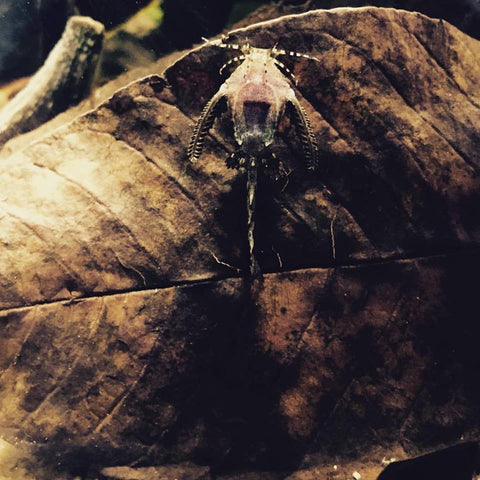- Continue Shopping
- Your Cart is Empty
Back to the bottom...
We talk about the concept of "substrate enhancement" or "enrichment" a lot in the context of aquatic botanicals (we tend to use the two terms interchangeably). We're not talking about "enrichment" in the same context as say, planted aquarium guys, with materials put into the substrate specifically for the benefit of plants.
Rather, "enrichment" in our context refers to the addition of botanical materials for creating a more natural-appearing, natural-functioning substrate- one which provides a haven for microbial life, as well as for small crustaceans, biofilms, and even algae, to serve as a foraging area for our fishes and invertebrates.
We've found over the years of playing with botanical materials that substrates can be really dynamic places, and benefit from the addition of leaves and other materials. For many years, substrates in aquarium were really just sands and gravels. With the popularity of planted aquariums, new materials, like calls and other additives, entered into the fray. With the "New Botanical"-style aquarium starting to gain in popularity, now you're seeing larger materials added on and in the substrate.

As we've discussed before, these botanical beds and mixed-grade substrates form an amazingly diverse, vibrant community.

With good flow, solid husbandry practices, and a nice mix of bottom-foraging fishes, the possibilities are endless for creating some very interesting aquariums!

There is something oddly compelling to us when we look at both aquariums and natural biotopes with a diverse, interesting bottom structure.You set the stage with wood, plants, and then enhance it even more with botanical materials.

It's a study in texture, color, contrast, and eco-diversity.

If you look at natural streams and other bodies of water where our fishes come from, you'll see that many of them are more than just sand or gravel. Rather, they have a mix of all sorts of botanical materials, ranging from leaves to seed pods, to pieces of driftwood. These materials form a surprisingly diverse set of "microhabitats", home to a remarkable variety of animals. One which can easily be replicated in our aquaria!
A mix of materials of different sizes on and in the substrate creates the "interstitial" spaces that benefit many small organisms, functioning as protection and breeding areas. You might say that, to some extent, an "enriched" or "enhanced" substrate functions as sort of a "refugium", providing protection for many beneficial creatures to grow and multiply. Many offer services like nutrient processing and scavenging of uneaten food, making this not only an aesthetically pleasing area within your aquarium- but a highly functional one, as well!
Form, function, and aesthetics all coming together is what we're all about!
Stay creative. Stay excited...
And Stay Wet.
Scott Fellman
Tannin Aquatics










Scott Fellman
Author